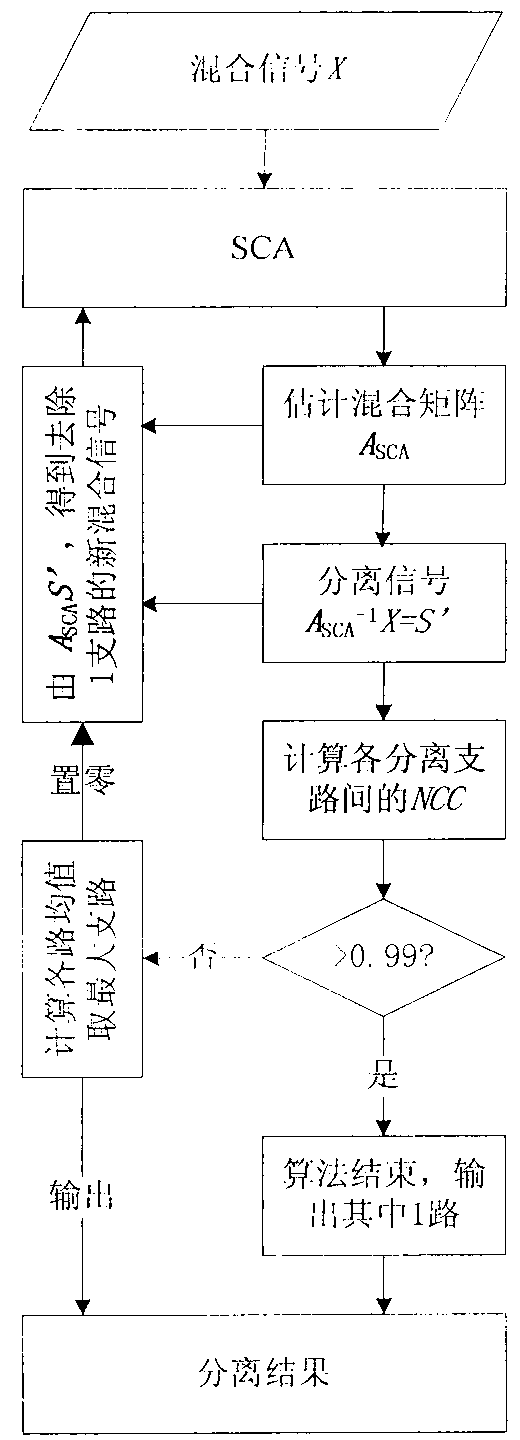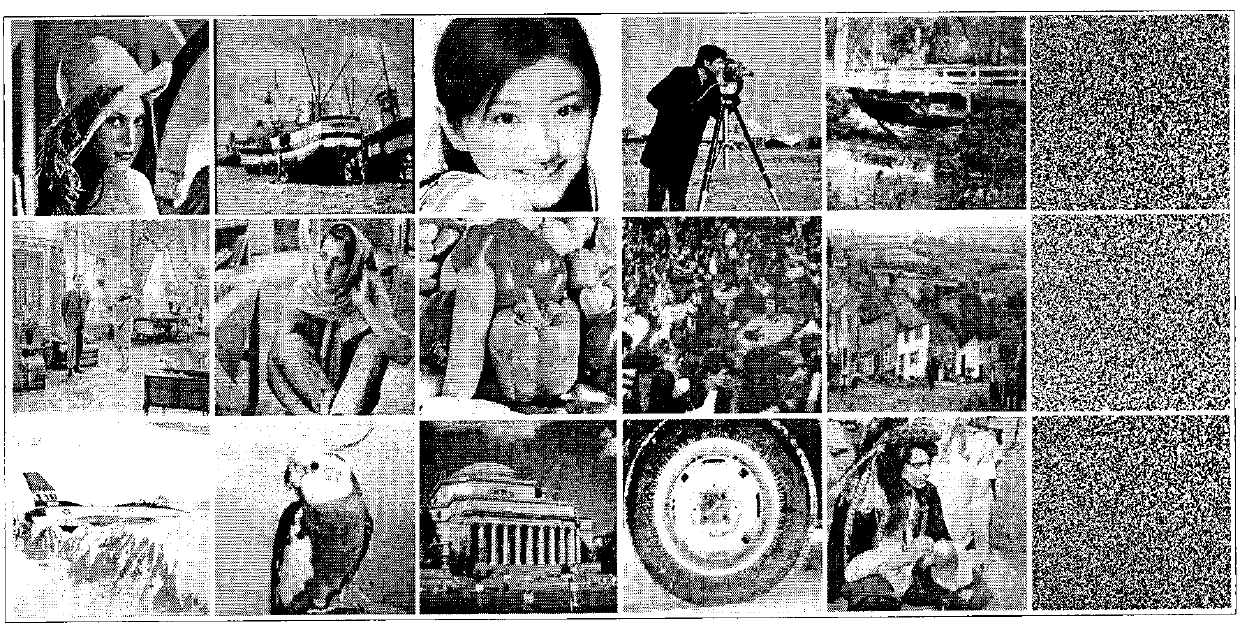Mixed-noise-resisting blind image source separating method based on feedback mechanism
A blind image source separation and noise mixing technology, which is applied in image enhancement, image data processing, instruments, etc., can solve problems such as unsatisfactory separation results, reduced separation effects, and reduced sparsity
- Summary
- Abstract
- Description
- Claims
- Application Information
AI Technical Summary
Problems solved by technology
Method used
Image
Examples
Embodiment Construction
[0019] 1) Thinning. Carry out one-level integer wavelet transform to m mixed images X of the same size, select the diagonal component coefficient matrix, and expand them by row as row vectors of a matrix respectively, and this matrix is the matrix for sparsening the mixed images;
[0020] 2) Remove zero columns and unify the direction. For each column X of the sparse matrix j (j=1, 2,..., T), if Satisfy X ij = 0,
[0021] Delete the jth column of X; if X 1j j =-X j . Process to get a new mixed signal X';
[0022] 3) Linear clustering. For any 2 column vectors X' of X' i and X' j ,like Then X' i and X' j collinear, let X′ i ∈θ(k),X′ j ∈θ(k), according to this linear clustering of all column vectors to get {θ|θ(k), k=1, 2,..., T};
[0023] 4) Estimate the mixing matrix A. Take the top m classes with the most clustering elements in θ, calculate the arithmetic mean of each class, and get the cluster center of the corresponding class, the cluster center matrix ...
PUM
 Login to View More
Login to View More Abstract
Description
Claims
Application Information
 Login to View More
Login to View More - R&D
- Intellectual Property
- Life Sciences
- Materials
- Tech Scout
- Unparalleled Data Quality
- Higher Quality Content
- 60% Fewer Hallucinations
Browse by: Latest US Patents, China's latest patents, Technical Efficacy Thesaurus, Application Domain, Technology Topic, Popular Technical Reports.
© 2025 PatSnap. All rights reserved.Legal|Privacy policy|Modern Slavery Act Transparency Statement|Sitemap|About US| Contact US: help@patsnap.com



